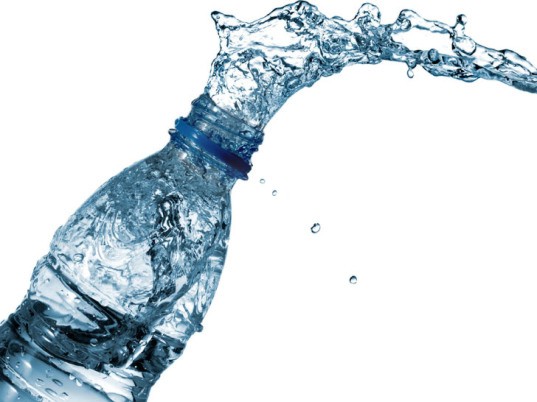Bottled Water Politics

By Bailey Houghtaling, MS, RDN, in partial fulfillment of the Water for Health Seminar (GRAD 5414), Virginia Tech
One can assume Americans are aware of the value of getting enough water to drink. Dehydration can result in serious health issues, and death.1 Bottled water sales are increasing,2 alluding that Americans’ are working to stay well-hydrated. So what is the issue, is there one? Americans are consumers, and convenience is key.3 Bottled water adds a quick grab and go option that many might find reasonable. But at what cost? It turns out, ‘cost’ applies to the traditional economic definition, and also a lack of public knowledge on source and content of bottled water varieties, and to stress on environmental resources.
The large companies that market sugar-sweetened beverages to the vast public are generally the businesses that provide the bottled water supply.4 If one compares a Coca-Cola soft drink with the same size of bottled water (let’s go with Coca-Cola’s Dasani), you’ll likely find a markedly higher price for the water product.4 A nutrient comparison would probably (it would) conclude water is the healthier choice.5 In a comparison of contaminents, would water then too be the healthier choice? That cannot be stated for certain.6
To be clear, the intent of this article is not to highlight sugar-sweetened beverages as the best option, as that would go against all public health recommendations5 and good sense. It is however the cheaper4 and more regulated6 of the two. To quote an interesting online article, “how did a substance that falls from the air, springs from the earth and comes out of your tap become a hyperactive multibillion-dollar business?”2 And what are the regulatory gaps?
Glad you asked (you didn’t). Most assume bottled water is held to a higher quality standard than tap sources.6 Water is technically considered a food, and therefore is regulated by the FDA (U.S. Food and Drug Administration) and also the Environmental Protection Agency (EPA).6 Despite oversight from these regulatory agencies, some information falls through the policy cracks. For example, the potential contaminants from plastics in the bottled water supply is not tested for,6 and while consumer access to water quality reports is mandated these are rarely locatable.4, 6
Finally, producing plastics requires quite a bit of our depleting natural resource stores (water included). Adding to the problem, most fail to recycle (many fear plastics will never decompose).6 So, what does it all mean? Consumers need to ask questions and demand more information, collaborative scientists need to work together to find solutions, and in the meantime, settling for unglamorous tap water to quench thirst needs is probably for the best.4
References:
- Jequier E, Constant F. Water as an essential nutrient: the physiological basis of hydration. European Journal of Clinical Nutrition. 2010;64:115-123.2
- Elmhirst S. Liquid assessts: how the business of bottled water went mad: theguardian; 2016. Available at https://www.theguardian.com/business/2016/oct/06/liquid-assets-how–business-bottled-water-went-mad.
- Abigail M. Okrent AK. U.S. households’ demand for convenience foods. United States Department of Agriculture; 2016. Available at http://www.ers.usda.gov/publications/err-economic-research-report/err211.
- Leiba N, Gray S, Houlihan J. 2011 Bottled water scorecard: Environmental Working Group; 2011:1-34.
- U.S. Department of Health and Human Services and U.S. Department of Agriculture. 2015-2020 Dietary Guidelines for Americans. 8th Edition. December 2015. Available at http://health.gov/dietaryguidelines/2015/guidelines/.
- United States Government Accountability Office. FDA safety and consumer protections are often less stringent than comparable EPA protections for tap water. Washington, DC: United States Government Accountability Office; 2009.


